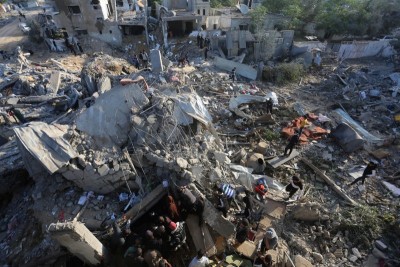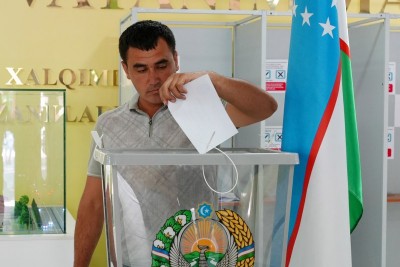 New York Crisis
New York Crisis
Survey says half of New York households facing cost of living crisis
New York: A recent survey has shown that 50 percent of working-age households in New York City do not earn enough to meet basic needs.
The Fund for the City of New York (Fund) in partnership with United Way of New York City (UWNYC) released the 2023 NYC True Cost of Living report (TCL), the seventh edition of the report since 2000.
Since launching, the report has identified the extent and nature of income inadequacy by geographic location, race and/or ethnicity, family composition, immigration status and work levels.
The TCL has become an indispensable tool for policymakers, employers and advocates in their efforts to promote economic equity in New York City.
The 2023 report showed that 50% of working-age households in New York City do not earn enough to meet basic needs.
This equates to 1,298,212 households or 2,991,973 people and marks a 38% increase from the 2021 TCL report, showing the profound economic impact the COVID-19 pandemic had on New York City working-age households.
People of color, immigrants (particularly Latine) and single mothers are among the most financially insecure populations.
“This report comes at a critical time for organizations supporting the community because it helps us to gain a more comprehensive understanding of how many New Yorkers are deeply affected by increasing economic insecurity and more specifically, where services are most needed,” said Grace Bonilla, President & CEO of UWNYC. “While the Official Poverty Measure (OPM) is broadly used, it’s become outdated. The NYC True Cost of Living report gives us the insight we need to meet New Yorkers where they are and to create pathways for them to thrive.”
The TCL is a better indicator of the actual cost of living because it prices each individual budget item, and determines the income needed to make ends meet without public and/or private assistance, taking into account geographic location and family composition.
The continued use of the OPM, which is based on decades-old methodology, leads to misunderstandings regarding wage adequacy and extremely low eligibility thresholds for essential programs like SNAP, CHIP, and the National School Lunch Program.
“New York City can’t afford to maintain the status quo when 50% of working-age households struggle to make ends meet,” said Lisette Nieves, President of the Fund for the City of New York. “We urge policymakers and employers to use this report as a guide to develop solutions that will lead to a stronger, healthier, more equitable New York. The Fund is the home—and steward—of the NYC True Cost of Living report and we look forward to working with partners to promote its continued use. The report lays the foundation for change and is a powerful policy tool.”
The NYC 2023 True Cost of Living (TCL) Report’s key findings include:
In New York City, 1,298,212 households or 2,991,973 people are struggling to make ends meet. Using the NYC cost of living and applying it to working-age households (excluding adults over 65, people with work-limiting disabilities, and those living in “group quarters”), reveals that 50% of households do not have earnings to meet the minimum cost of living in New York City.
The rate of income inadequacy has grown significantly since the last report in 2021, going from 36% to 50%. This amounts to a 38% increase in a two-year period.
The highest rates of households struggling with income inadequacy are found in the Bronx, particularly the central Bronx, and parts of Brooklyn, including Brownsville and Ocean Hill.
People of color are disproportionately more likely to struggle with economic insecurity. In New York City, 65% of Latine, 60% of American Indian households, 58% of Black, and 51% of Asian, Native Hawaiian, and Pacific Islander households struggle to make ends meet. Latine communities have rates of income inadequacy that are more than double the rate of white households (32%).
Being foreign-born is associated with higher rates of economic insecurity. 64% percent of noncitizen householders in New York City do not have incomes that meet their basic needs.
Households with children are at a greater risk of not meeting their basic needs, accounting for more than half of households with incomes below the TCL.
Support Our Journalism
We cannot do without you.. your contribution supports unbiased journalism
IBNS is not driven by any ism- not wokeism, not racism, not skewed secularism, not hyper right-wing or left liberal ideals, nor by any hardline religious beliefs or hyper nationalism. We want to serve you good old objective news, as they are. We do not judge or preach. We let people decide for themselves. We only try to present factual and well-sourced news.







